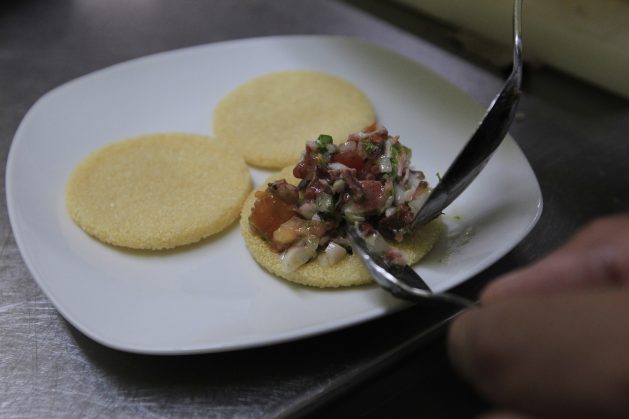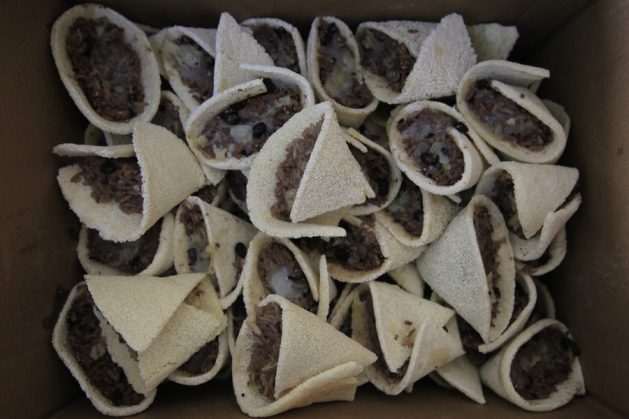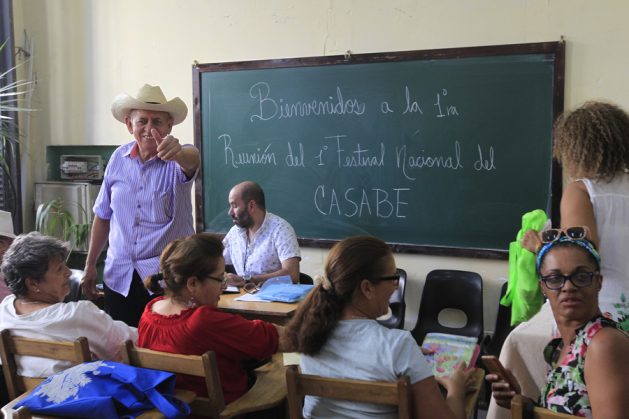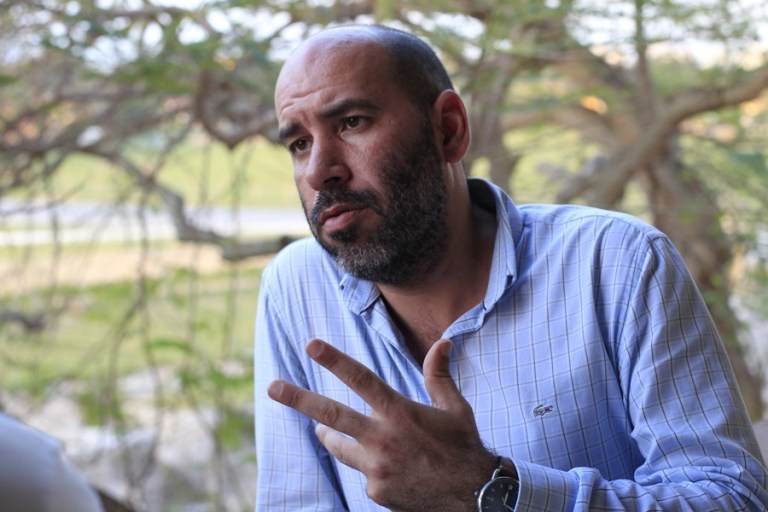Cassava Bread, a Cultural Heritage Food, Makes a Comeback in Cuba
By Luis Brizuela (IPS)

HAVANA TIMES – If there are bread shortages, then cassava bread, is a popular saying in Cuba which reflects the benefits and possibilities it has to replace wheat bread in Cubans’ everyday diets. Furthermore, this Pre-Colombian food has a long list of credentials to support its candidature to be declared Cuba’s and the world’s intangible cultural heritage.
Cassava bread or pan de indios, as it is also known, is perhaps the oldest artisanal food on this Caribbean island, which is linked to its culinary and historic traditions and is ideal for ensuring food security, as the raw material doesn’t need to be imported.
It was even a decisive factor when indigenous groups such as the Taino settled in the Antilles and, later, for the Spanish conquest and colonization of the Americas.
This was thanks to this versatile food’s characteristics which, if stored properly, can last for years without going bad. Nutritional benefits include the absence of fat and gluten in its composition which make it ideal for people who follow a special diet or have gluten intolerance.
It has the surprising characteristic of being obtained from the bitter yucca plant’s sap, a poisonous vegetable for humans and animals, but when it is sieved in the sebucan or cibucan (a kind of press) and cooked at high temperatures in a griddle called a buren, it loses its deadly toxicity and becomes a delicacy with endless possibilities.
Cassava bread forms part of the culinary identity of Amazon countries, as well as countries in the Caribbean basin such as the Dominican Republic, Colombia, Venezuela, Belize and the Garifuna communities in Guatemala and Mexico, where different methods are used to extract the yucca sap, as well as to cook, boil and serve different size tortas.

“For some years now, the Cuban Culinary Association has been promoting the declaration of cassava bread as Intangible Cultural Heritage, with the support of gastronomical societies in the Dominican Republic, Colombia and Venezuela,” Domingo Cuza, the director of the state-run Tourist Information System (Infotur) in the eastern Granma province, told IPS.
According to this food researcher, cassava bread is a “great” and “surprising” food, a “survivor which fed the Mambise troops during the Cuban independence war (1868-1898), and is making a comeback today.”
According to Cuza, “the best ones in the country are made” at cassava farms in the provinces of Granma and Camaguey, “as part of an age-old tradition.”
He believes that the rescue and promotion of cassava bread is greatly linked to the philosophy of international movement “Slow Food”, which was founded in Rome in 1989 and encourages natural foods and the rescue of ancestral wisdom, such as the foundations of food security in each country.
Madelaine Vazquez, vice-president of the Sustainable Food Movement explained that with Cuban agro-ecological farms gradually joining the Slow Food movement, “more and more people are becoming more conscious about what they eat and how it is produced.”
The Sustainable Food Movement, affiliated with the NGO Cuban Society for the Promotion of Renewable Energy Sources and Environmental Protection (CubaSolar) is running the so-called “Arca del Gusto” project, which is a voluntary initiative which catalogs and describes Cuban foods that are threatened from a cultural and biological point of view.

Cassava bread is heads and shoulders above the 41 foods, animals and products that make up this list.
The announcement of Cuban cuisine as the country’s Intangible Cultural Heritage, in October 2019, boosted intentions to grant similar recognition for cassava bread.
Along this road, efforts by the Cuban Cooking Association and the Ministry of Tourism, as well as other bodies, could provide additional support for national cuisine to be recognized as heritage by the United Nations Educational, Scientific and Cultural Organization (UNESCO).
Marbelis Dominguez, a domestic worker living in Holguin, told IPS that her family eats cassava bread regularly, “but especially at dinners to celebrate and the end and beginning of a new year, accompanied by roast pork, which is how we eat it a lot here, although sometimes we just add a little bit of cooking oil and salt.
Raudiel Santiesteban, a young salesman in the Vista Alegre neighborhood in the eastern city, told IPS that in December, sales of the product went up significantly, with prices ranging from 2 and 5 Cuban pesos (approximately 0.10 to 0.20 USD), depending on the diameter of the tortas.
“It’s difficult to make cassava bread: the person making it has to find yucca roots, wash it, peel it, grate it and then pass it through a sieve before cooking it,” Santiesteban pointed out, which goes to prove that the artisanal method of making it is still preferred and depends almost entirely on the hands of families or groups of families.

In recent years, efforts by a group of producers, chefs and historians have meant that cassava bread is beginning to captivate people’s palates with innovative combinations in western Cuba, where it wasn’t eaten a great deal before.
In the Cuban capital, it is served at private restaurants which use it to make crepes or snacks with fish ceviche, ropa vieja (shredded meat in tomato sauce) and black beans; as well as for desserts with ice cream, custard, grated coconut with chocolate, sweet potato or a fruit cocktail.
“As far as I know, 15-20 restaurants in Havana have cassava bread on their menu,” the general coordinator of the “La Moneda Cubana” project, Angel Aguilera Castillo, told IPS.
Born in 2012, the local development revitalization project, based in Old Havana, one of Havana’s 15 municipalities, trains unemployed young people in trades such as gastronomy, bar tending and cooking, as well as also providing them with learning geared towards preserving and promoting the country’s cultural heritage and identity.
According to Aguilera, the Cuban Cooking course which is taught to young people, includes the study and sample of cassava bread, as well as workshops with some of the main producers.
In December, the idea of holding the First Cassava Bread Festival was born during the seventh Gastronomy and Cooking Day, organized by La Moneda Cubana, and was set for April, with support from the Mediterraneo Havana restaurant and Mercado de la Tierra, as well as other agro-ecological ventures.
“Specialist conferences will be held, producers from all over the country will come to Havana and there will be exhibitions about the different ways of serving and enjoying cassava bread. Our mission is to defend the traditional values of Cuban cuisine,” the expert explained.
The event in April means that the private sector (which has picked up again after 2010 when economic reforms were made to help the country leave the crisis that still endures today) is a reference today in terms of providing quality food services, including cassava bread options.
Aguilera lamented that the food is still absent from the State’s food establishments, while advocating for better “service and variety of offers to give the population a menu they deserve.”
Cassava bread will have to be included, “because it doesn’t make any sense that a product that is being promoted as the country’s intangible cultural heritage, isn’t being offered at State establishments,” he weighed in.
With flour and bread shortages, cassava bread could be an effective and old solution for Cuban diets.






Pre-Columbian, please.